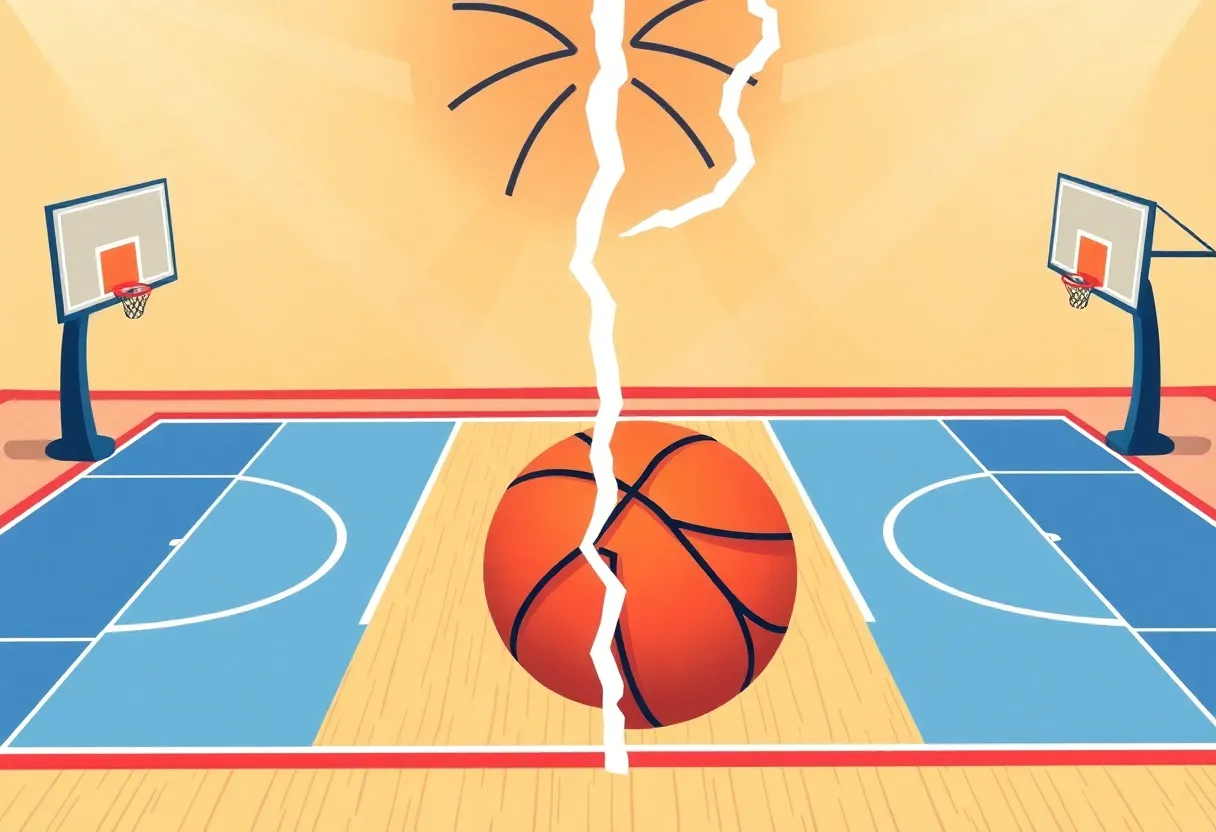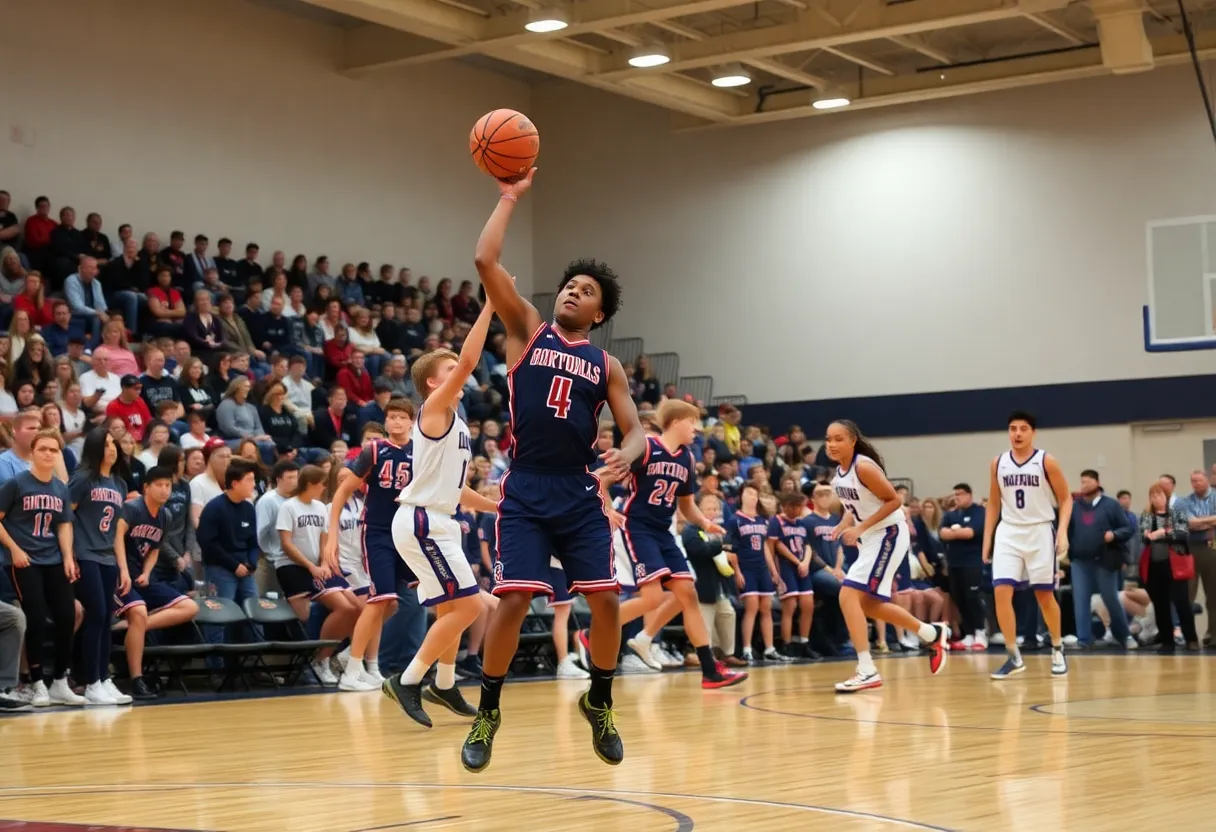Minneapolis, October 25, 2025
News Summary
The ongoing revenue sharing dispute between the WNBA and the Players Association has escalated as negotiations near a crucial phase ahead of the collective bargaining agreement deadline. NBA Commissioner Adam Silver has called for a significant increase in players’ share of revenues. While the current player compensation stands at about 9%, there is growing pressure for a fairer arrangement that aligns with projected revenue growth. Mistrust remains a significant issue as both sides push for transparency ahead of the October 31 deadline, raising concerns about potential work stoppages.
Minneapolis—The ongoing revenue sharing dispute between the Women’s National Basketball Association (WNBA) and the Players Association (WNBPA) has heightened as negotiations prepare to enter a critical phase ahead of the upcoming collective bargaining agreement (CBA) deadline on October 31. This issue has gained new urgency following remarks by NBA Commissioner Adam Silver on a national morning show, where he advocated for a significant increase in players’ share of the league’s revenues.
Preceding Silver’s comments, Minnesota Lynx forward Napheesa Collier publicly expressed dissatisfaction with the current leadership structure of the league. Collier’s framework for reform highlighted the players’ desire for a more equitable revenue sharing arrangement, sparking discussions within both the league and the players’ association. Currently, the players’ compensation stands at approximately 9% of the league’s revenue, a figure Silver insists must rise considerably in the forthcoming CBA negotiations.
Silver’s perspective is shaped by anticipated revenue growth; analysts predict that the WNBA is poised to see its TV revenue quadruple beginning next season. This increase in financial backing inspires confidence among players that they could expect starting contracts—ranging from about $850,000 for supermax deals to $300,000 for minimum contracts—to rise significantly, compared to current averages of $249,244 and $70,103, respectively.
Despite this favorable economic forecast, the WNBPA has signaled discontent with the league’s approach. The association criticized Silver for framing revenue discussions in terms of absolute dollar amounts rather than percentages, arguing that a fair percentage is essential for meaningful negotiations. WNBPA Executive Director Terri Jackson highlighted that the union’s overarching goal is to establish a revenue-sharing system directly connected to league performance, contrasting with what they perceive as the league’s attempt to implement a segregated revenue-sharing approach.
Both parties have noted significant mistrust amid the CBA negotiations, primarily due to perceived opacity regarding the league’s finances. The WNBPA has been vocal about a need for transparency in financial reporting as one of the focal points of negotiations. Allegations have emerged from the players’ association that the league has not presented viable economic proposals and has engaged in tactics aimed at prolonging discussions without genuine movement towards a resolution.
The deadline for the current CBA looms larger with every passing day, and concerns around a potential work stoppage or lockout grow as both sides engage in what has become an increasingly contentious negotiation process. Coaches and players alike have voiced issues beyond revenue sharing, including concerns over officiating standards and roster sizes—issues that already complicate the current landscape further.
As the financial health of the WNBA reportedly improves, the urgency surrounding the revenue sharing topic may be paramount in redefining player salaries and overall compensation. The results of these negotiations will play a crucial role in determining the future of women’s professional basketball in the United States.
FAQ
What is the primary issue in the WNBA revenue sharing dispute?
The central issue involves how revenue sharing should be structured in the new collective bargaining agreement (CBA), with ongoing disagreements between the WNBA and the Players Association regarding percentage versus absolute dollar amounts.
What did Adam Silver say regarding player compensation?
Adam Silver expressed support for a larger share of revenue for players, advocating for a raise beyond the current 9% figure.
What are the potential financial changes for WNBA players in the upcoming season?
Reports suggest starting contracts could significantly increase, with supermax starting contracts projected at approximately $850,000 and minimum contracts at around $300,000.
What are the possible outcomes if an agreement is not reached before the deadline?
If no agreement is reached by October 31, there is potential for a lockout or work stoppage, which would significantly impact the season and revenue generation.
Key Features of WNBA Negotiations
| Feature | Current Status | Implications |
|---|---|---|
| Player Revenue Share | 9% of league revenue | Negotiations may lead to higher player salaries. |
| Commissioner Comments | Advocated for larger shares for players | Reinforces belief in potential for agreement on better player compensation. |
| CBA Deadline | October 31 approaching | Requirement for urgent negotiations to avoid lockout. |
| Revenue Growth Index | Quadruple TV revenue projected | Increased financial capacity can benefit players if negotiated well. |
Deeper Dive: News & Info About This Topic
HERE Resources
WNBA Players Union Challenges League on CBA Negotiations
WNBA Players Negotiate New Collective Bargaining Agreement
Phoenix Mercury Advance to WNBA Finals After Major Roster Overhaul
WNBA Faces Officiating Controversies and Leadership Challenges
Chicago Selected to Host the WNBA All-Star Game
WNBA Collective Bargaining Agreement Negotiations Heat Up
Additional Resources
- ESPN: WNBA Disputes Union Claim
- Wikipedia: Collective Bargaining Agreement
- Just Women’s Sports: WNBA Players Association Spar
- Google Search: WNBA revenue sharing
- USA Today: Adam Silver on WNBA Players Pay
- Encyclopedia Britannica: WNBA
- CBS Sports: Adam Silver on WNBA Player Compensation
- Google News: WNBA collective bargaining
Author: STAFF HERE PHILADELPHIA WRITER
The PHILADELPHIA STAFF WRITER represents the experienced team at HEREPhiladelphia.com, your go-to source for actionable local news and information in Philadelphia, Philadelphia County, and beyond. Specializing in "news you can use," we cover essential topics like product reviews for personal and business needs, local business directories, politics, real estate trends, neighborhood insights, and state news affecting the area—with deep expertise drawn from years of dedicated reporting and strong community input, including local press releases and business updates. We deliver top reporting on high-value events such as Mummers Parade, Philadelphia Flower Show, and Thanksgiving Day Parade. Our coverage extends to key organizations like the Greater Philadelphia Chamber of Commerce and United Way of Greater Philadelphia, plus leading businesses in telecommunications, food services, and healthcare that power the local economy such as Comcast, Aramark, and Children's Hospital of Philadelphia. As part of the broader HERE network, we provide comprehensive, credible insights into Pennsylvania's dynamic landscape.





